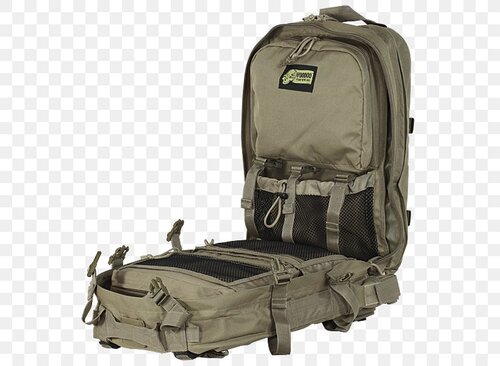I need a new one that has just about everything in it to handle basic trauma found after a tornado or on the road with an accident ... any suggestions?
Hi James, have you considered putting your own together instead of picking up a kit? I've found the kits (especially the bigger ones) often include things most folks aren't likely to use, have OTC 'medication' (like bee sting swabs) with expiration dates that need to be monitored (or that may leak all over the rest of your stuff), and may contain equipment that is beyond the training level of the person using it.
If you end up putting your own kit together, you'll know where everything is located (because you put it there), and you won't be needlessly paying for things you aren't going to use. For the sort of incidents that we would come across, you nailed it--trauma is the name of the game. That said, if you build a kit, I'd encourage you to put the following things in it:
- PPE
- Nitrile gloves and eye protection (no latex gloves due to prevalence of latex allergies)
- A good set of trauma shears*
- Lots of gauze dressings/pads
- 4x4s are the most common and fit the bill for most lacerations, you can get them individually packaged, or in bulk stacks. They're cheap; get a bunch.
- Combi-pads/abdominal pads for the bigger stuff. You may never use them, but they're not expensive, and if you need one, you'll be relieved to have it.
- Bandaging to hold the gauze pads in place and free up your hands for other stuff
- Cling wrap (Kerlix) wraps around the dressing and sticks to itself. Might take a few wraps, it's good to have a few rolls.
- Compression cling wrap (Coban) is like Kerlix, but is elastic/stretchy and keeps some circumferential pressure on an area when applied--be careful using this so as not to impede circulation (especially on a patient that may be shocky or have compromised blood pressure), but if you have first aid training, I'm guessing that was probably covered.
- Triangular Bandages (Cravats) are durable, non-stretchy bandages that are good for splinting and making slings. I'd keep a few of these in your kit as well (be careful not to lose the safety pins that come with them!).
- Bandage tape
- Clear Plastic Tape (Transpore) sticks to skin, is flexible, easy to tear, and can hold a small dressing/piece of gauze in place against the skin, where wrapping would be impractical.
- Cloth Tape (Medipore) is a bit stronger, is non-stretchy, and nice for splinting or securing dressings when Kerlix or Coban won't do, and has a bit of non-medical utility for, you know, just taping stuff.
- A box of Band-Aids: the larger 1" size (these are mostly for you... because if you get a cut when you're out and need a band-aid, what do you do? Raid your kit! ...or is that just me?)
- A good CPR pocket mask (or BVM if you're trained to use one)
- A tourniquet or two (if you're trained to apply them). Use as a last resort when direct pressure with the gauze pads can't stop bleeding. They come in nice pre-packaged kits--familiarize yourself with how the model you get is applied before you need to use it. If you ever do come across a person bleeding out who really needs it, you ideally don't want to take additional time to remove and read the instruction sheet.
- Airway management (within your level of training!) If you're trained to manage airways with things like suction, adjuncts, and the like, then pack the appropriate supplies. If not, then knowing and applying the basic airway maneuvers and techniques will be just fine.
* You know those trauma shears that are advertised to cut through a penny? Guess what, they do! And guess what else? It ruins the shears! My curiosity cost me a new set of shears. Don't be like me.
There's some other trauma stuff you can put in there too, like chest seals, hemostatic agents/dressings, splints, airway adjuncts, etc. but only consider these if your level of training covers their use. Also, the supplies in the original list will work in the vast majority of cases you come across (and you may never come across a case where they're needed). The fancier stuff will add cost to your kit, and possibly never get used. Of course, if you have the means to purchase them and the training to use them, then by all means go ahead. But for the chaser on a budget, I'd recommend starting with the basics. Remember, if you come across someone who legitimately needs help, your goals are to (a) keep them from further harm, (b) stabilize them to the best of your ability, and (c) get them to definitive care (like a hospital), or to EMS, who will in turn get them to definitive care.
As for a bag, my department uses MERET, which has held up well with daily use. That might be overkill for a kit that lives in the car, though. 5.11 has some bags too, and their stuff is usually pretty nice/durable. Of course, if your existing bag is in good shape, you can just re-use that. And don't forget the original EMS jump kits were fishing tackle boxes! Nothing says it need to be a purpose-built medical bag.
Anyway, long answer to a short question. Hope this helps!

